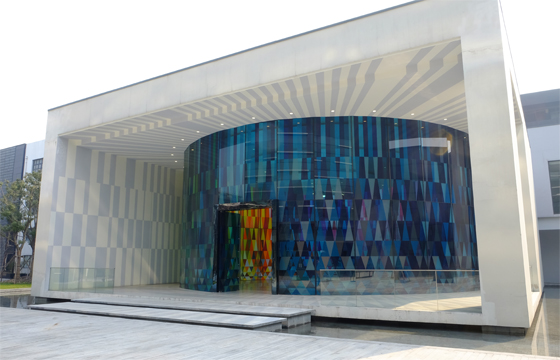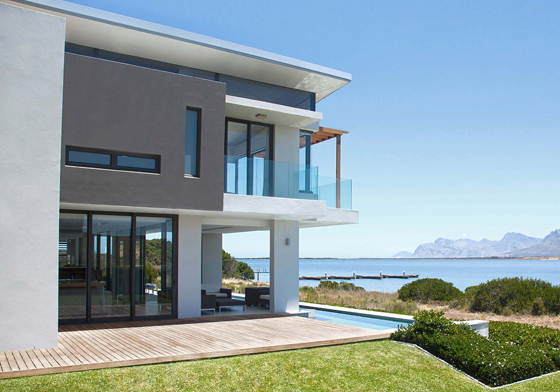So transparent!: Vanceva
Brand story by Dominic Lutyens
Kingsport, United States
12.02.18
This company’s got perspective. Since 1937, American manufacturer Eastman has been making the world more colourful with VANCEVA® Colors laminated glass.
The Emporia Shopping Mall in Sweden, designed by Wingårdh. It won the 2016 Vanceva World of Color award in the Exterior category
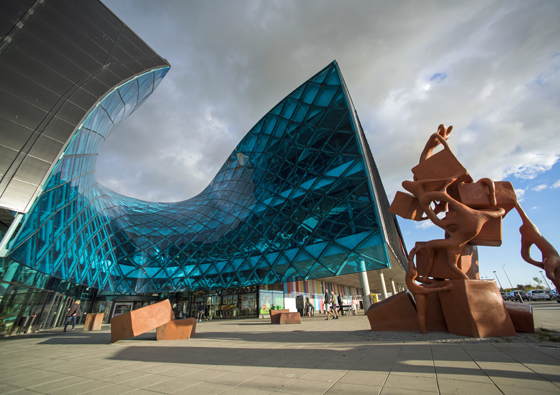
The Emporia Shopping Mall in Sweden, designed by Wingårdh. It won the 2016 Vanceva World of Color award in the Exterior category
×Why be limited to monochrome glass on a building’s facade or on a large-scale surface? It’s a question many architects and designers ask themselves today, given that it’s possible to opt for complex, polychrome glazing in a multitude of joyous hues.
This innovation has its origins in 1937 when Saflex first introduced its high quality, state-of-the-art laminated glass as well as its reliable service and expert advice to customers. Saflex® polyvinyl butyral (PVB) interlayers for glass lamination, to be precise, are now one of US company Eastman’s key architectural glazing products, along with Vanceva® Colors PVB interlayers.
Harbor Mall in Thailand, by architects This Design Company, scooped the 2010 Vanceva World of Color award in the Exterior category
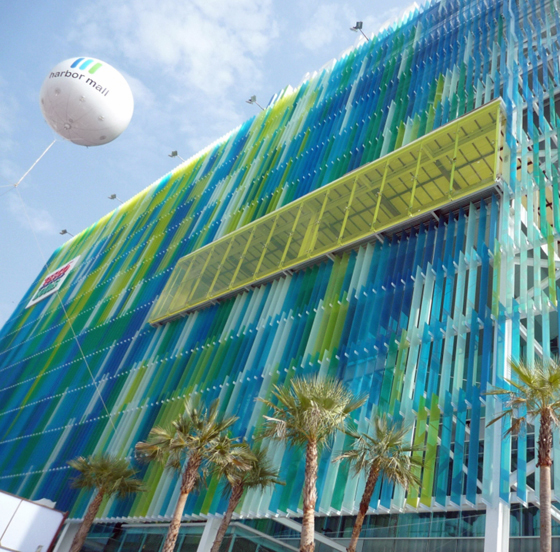
Harbor Mall in Thailand, by architects This Design Company, scooped the 2010 Vanceva World of Color award in the Exterior category
×Eastman is a global advanced materials and speciality additives company, which manufactures a broad range of products found in items people use on an everyday basis. It delivers its customers — in markets such as transportation, building and construction and consumables — innovative products and solutions while being committed to safety and sustainability. Eastman’s HQ is in Kingsport, Tennessee, and it has approximately 14,000 employees around the world. It has customers in more than 100 countries and its revenue in 2016 was approximately $9bn.
Its Vanceva coloured interlayers include jewel-bright, rainbow-hued surfaces suitable for a wide variety of architectural features, including curtain walls, atriums, skylights, partitions, balconies and glass doors. Amazingly, these interlayers can be combined to produce more than 17,000 colours; these can be transparent, translucent or solid, which renders them even more versatile. What’s more, on the Vanceva website, architects and designers can explore the unlimited color combinations available using the Vanceva colour system: within the virtual colour selector, they will find the closest match to RAL, Pantone, NCS or RGB colours.
Tilman Thürmer and Manuela Mappa’s Shanghai Museum of Glass won the 2016 Vanceva World of Color Award in the Interior Category, where Vanceva® Colors glass is used to create rainbow-hued harlequin-like patterns
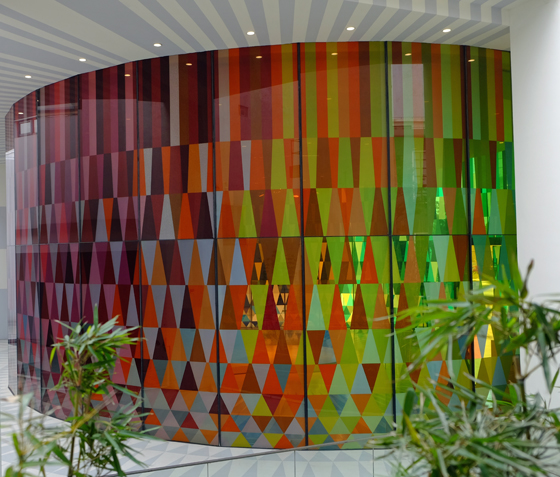
Tilman Thürmer and Manuela Mappa’s Shanghai Museum of Glass won the 2016 Vanceva World of Color Award in the Interior Category, where Vanceva® Colors glass is used to create rainbow-hued harlequin-like patterns
×Aesthetics aside, Vanceva products are equally appealing for their excellent functionality, which encompasses structural performance — they are rigorously tested for durability —efficient acoustic sound absorption, solar UV protection which helps delay the fading of colours, safety, security and weight reduction inherent to the PVB when it’s laminated between two pieces of glass.
Vanceva® offers quieter hues, too, in the guise of its Earth Tones collection, which consists of PVB interlayers in blue, grey, green, brown and bronze shades. Furthermore, Vanceva offers a White collection for those after a more neutral, albeit varied palette; these can be combined with coloured Vanceva interlayers to achieve the required degree of translucency in any given hue. The collection allows designers and architects to create interior and exterior applications that combine the perfect interplay of translucency and a uniform, near-opaque surface that gives spaces privacy.
Top: The neutral shades of the Vanceva® Earth Tones offer a soothing alternative to bolder, polychrome schemes. Above: Torres de Ascensores at the Hospital Rey Juan Carlos (Rafael de la Hoz) in Spain features Vanceva® Polar White frosted glass (above)
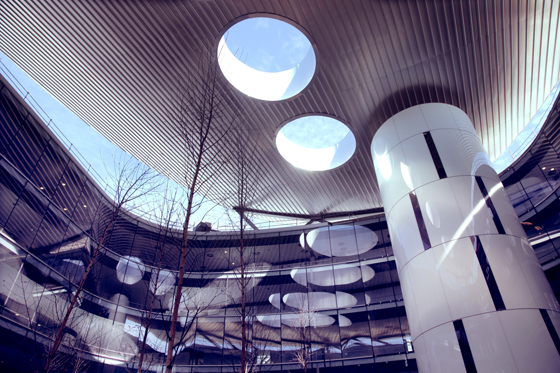
Top: The neutral shades of the Vanceva® Earth Tones offer a soothing alternative to bolder, polychrome schemes. Above: Torres de Ascensores at the Hospital Rey Juan Carlos (Rafael de la Hoz) in Spain features Vanceva® Polar White frosted glass (above)
×Its tones include Vanceva Cool White, which creates a stylish, appealingly frosted look that lets a lot of light penetrate the surface while ensuring privacy. Another tone, Arctic Snow, offers a medium light transmission, providing plenty of privacy without being fully opaque. Multiple layers of this can be added to reduce light transmittance further. Then there is Vanceva Polar White, which transmits less light and so provides even greater privacy. Finally, there is Vanceva Illusion White, which allows glass to graduate from medium to full transparency, thereby revealing attractive vistas, while simultaneously hiding unwanted views.
Last but not least, 2018 will see the Vanceva World of Color Awards — an international competition honouring architects, interior designers, glass-makers, furniture designers, glazing contractors, engineers and artists for their innovative use of coloured laminated safety glass on buildings and in interiors.
The submissions will be judged by an international jury of eminent professionals representing the architecture and design industries, namely Carlo Santambrogio of Milan-based design company Santambrogiomilano and architects Joakim Lyth, Nicholas Leahy, Rafael Viñoly-Menendez and Sebastiano Baldan.
© Architonic



